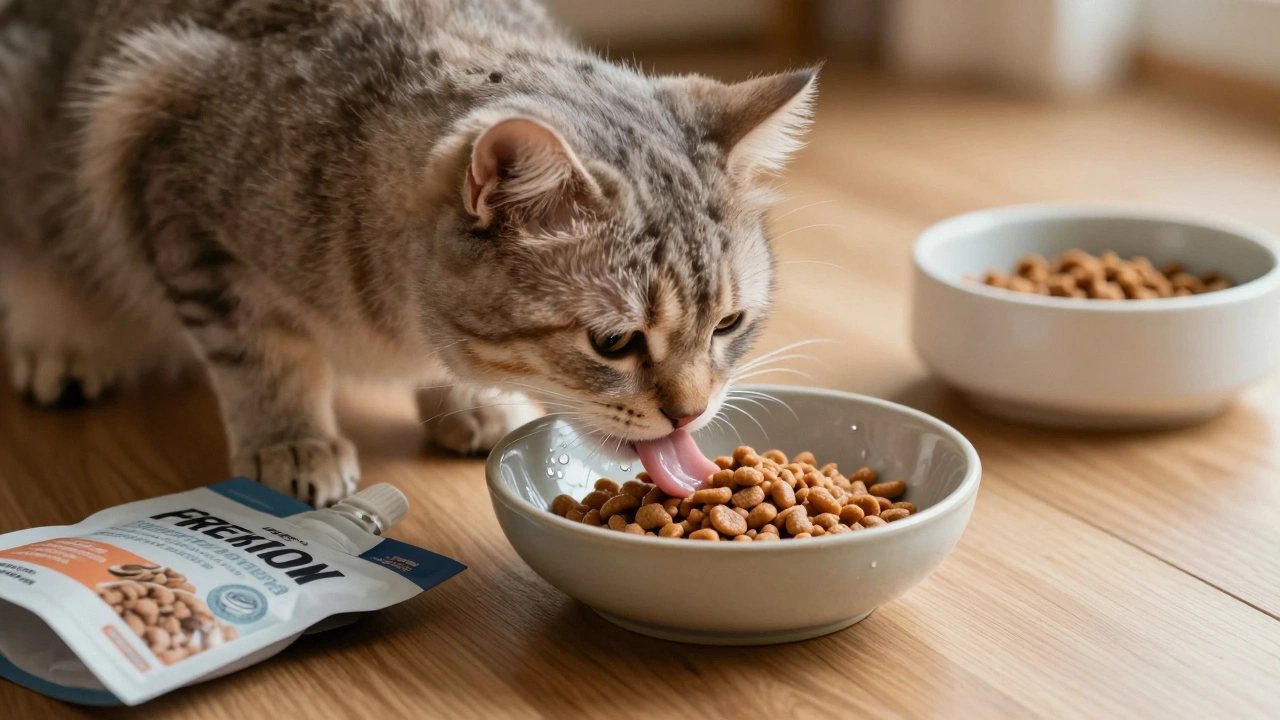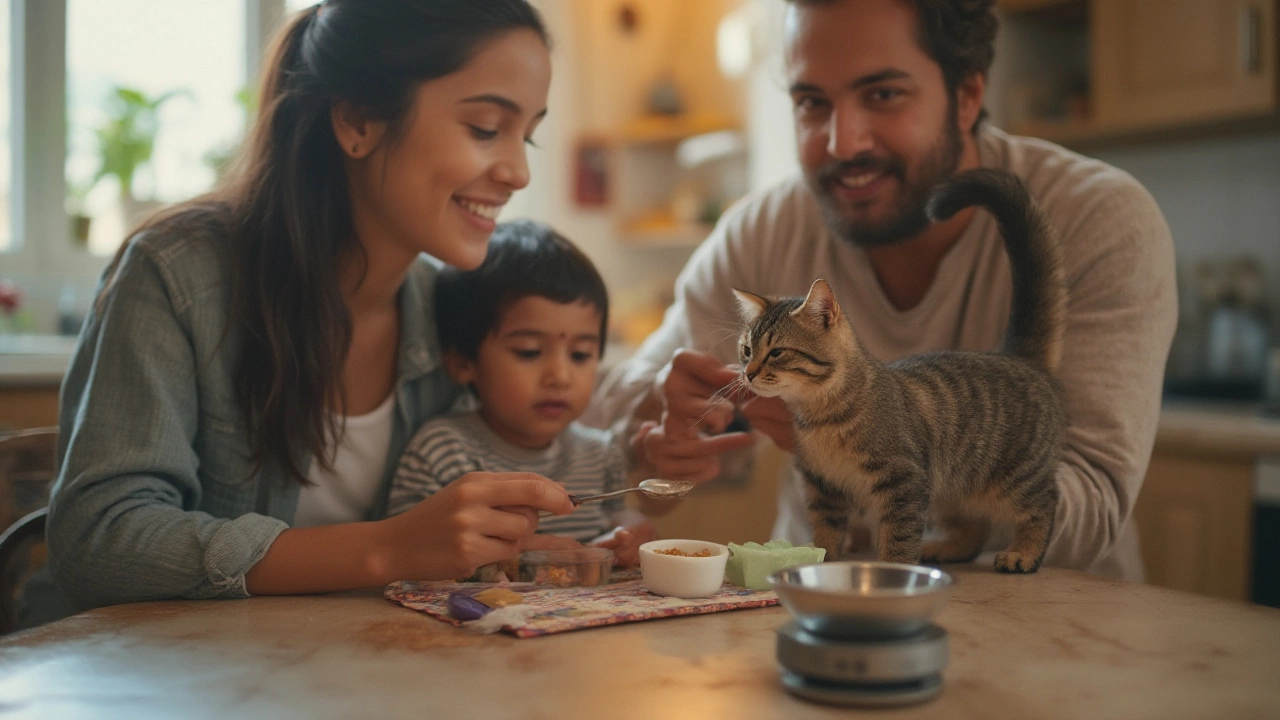Wet Food for Cats: Benefits, Choosing Tips, and Feeding Basics
If you’ve ever wondered why many vets push wet food for cats, you’re not alone. Cats are natural hunters, and their bodies are wired to get most of their moisture from prey. Commercial wet food mimics that pattern, giving them the water, protein, and calories they need in a single bowl.
One of the biggest upsides of wet food is hydration. A typical dry kibble contains about 10% moisture, while wet food tops out at 70‑80%. That extra liquid helps keep the urinary tract clear and reduces the risk of kidney issues—especially important as cats age. Wet food also tends to have higher protein levels and fewer carbs, which lines up better with a cat’s obligate carnivore diet.
How to Pick the Right Wet Food
Start by checking the label. Look for real meat listed first—chicken, turkey, salmon, etc.—and avoid vague terms like "meat by‑products" or "animal derivatives." A good wet food will have a moisture content of at least 70% and a protein content of 8‑10% (dry matter basis). If your cat has sensitivities, choose a limited‑ingredient formula that focuses on a single protein source.
Price can be a temptation to go cheap, but low‑cost options often cut corners with fillers and artificial additives. Read the ingredient list for artificial colors or flavors; these add nothing useful and can trigger digestive upset. When possible, pick a brand that undergoes regular feeding trials or has a clear recall history.
Feeding Wet Food the Right Way
Serve wet food in small portions—about a quarter cup for a typical adult cat. Cats love fresh food, so try to keep the bowl topped up within a couple of hours. If you’re mixing wet and dry, add the wet portion first, then sprinkle a little dry kibble on top for texture.
Store opened cans in the fridge and use them within 24‑48 hours. Cover the can with the lid or a sealable container to keep the food from drying out. If you notice a strange smell or mold, toss it. Cats are picky about smell, and a spoiled batch can turn them off to the whole brand.
Finally, monitor your cat’s weight and stool. Wet food should keep stools soft and well‑formed. If you see persistent diarrhea or constipation, it might be a sign to switch formulas or talk to your vet.
Bottom line: wet food fits a cat’s natural diet, helps keep them hydrated, and can simplify feeding routines. By reading labels, choosing quality brands, and serving fresh portions, you’ll give your feline a tasty meal that supports long‑term health.

Is Wet or Dry Food Better for Cats? The Real Difference Explained
Wet food is better for most cats because it provides essential hydration, supports kidney and urinary health, and matches their natural diet. Dry food can lead to dehydration and weight gain.
read more
How Much Wet Food Does a 10 lb Cat Really Need? Daily Feeding Tips & Guide
Discover how much wet food a 10 lb cat needs daily, tips on portion control, and why the right amount matters for your feline’s health.
read more

